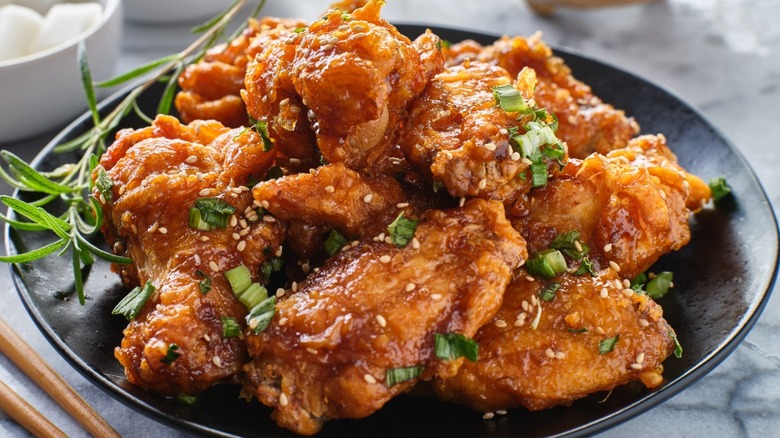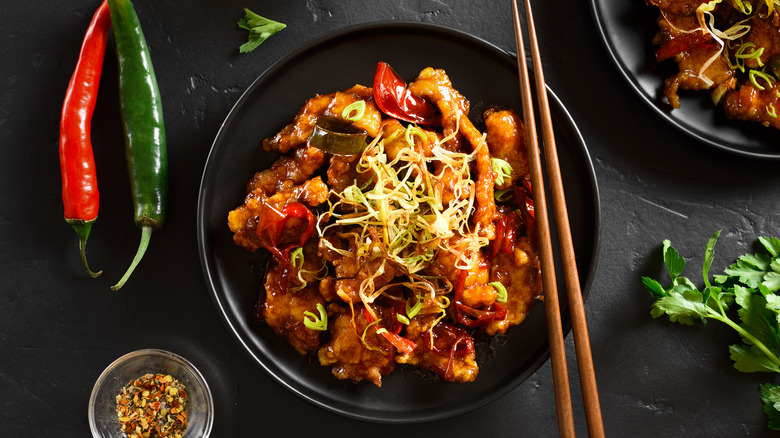The Surprising History Of Korean Fried Chicken's Journey Into The Mainstream
We may receive a commission on purchases made from links.
In 1960, Americans consumed 133 pounds of beef and pork compared to 28 pounds of chicken per capita, according to the National Chicken Council. Fast forward to 2022, Americans consume 98 pounds of chicken a year. Driven primarily by health and safety concerns, Americans consume leaner meats and watch cholesterol and fat intake. Higher beef prices and an increased focus on environmental and ethical reasons have also impacted the increase in chicken consumption, per Washington Post.
Once considered a "Gospel bird" by African Americans (via BBC), fried chicken was associated with going to church on Sundays and was only eaten on special occasions until World War II. Now fried chicken is consumed any day of the week, and fast food chains compete for "Best Fried Chicken Sandwich" accolades, especially in China, where KFC is the most popular fast food chain. Although the South in the U.S. may be associated with fried chicken the most, other cultures have a version to embrace the crispy, moist, salty fried bird.
The Japanese celebrate Christmas with a tradition of enjoying American-style fried chicken, despite having their delicious version deep fried with ginger, soy, and garlic flavors. Unlike American fried chicken, Korean fried chicken, referred to as "KFC," is less about a battered breast or thigh. Instead, it is all about the sauce. Double-fried pieces of chicken are treated to a sticky coating, sweet with gochujang (chili paste) for a hint of spice — Korean fried chicken is called "Candy Chicken" for a good reason.
KFC is one of many aspects of Korean culture embraced by the US
According to Smithsonian Magazine, the U.S. military presence during the Korean War introduced fried chicken to South Koreans. The '80s brought KFC and Popeye's fast food chains to South Korea, where more people enjoyed fried chicken in restaurants and began having it delivered to their apartments. However, it wasn't until 1997 that the Asian financial crisis laid off many, and Korean fried chicken took off.
Many Koreans opened fried chicken restaurants to feed their families to earn a living. Coated in cornstarch and double fried, KFC remains crispy despite being covered in a sweet chili sauce. During this time, Korean fried chicken developed. However, it would take two decades for it to reach the U.S. Along with K-Pop and K-Dramas, Americans began embracing more Korean culture around 2013. Mom-and-pop restauranteurs like Karen and Young-Jun Park saw an opportunity and rode the "Korean wave," introducing Americans to Korean fried chicken with their restaurant KoChix in Washington, DC (via The Washington Post). KFC went from niche to mainstream along with other Korean dishes like bibimbap and bulgogi. Just as BTS has become part of modern American music, per Billboard, chefs and virtual cooking class platforms like Masterclass demonstrate how to make Korean fried chicken.
Served with Korean-style pickles or kimchi, KFC is a homestyle meal that is a successful example of cultural exchange between two countries.

